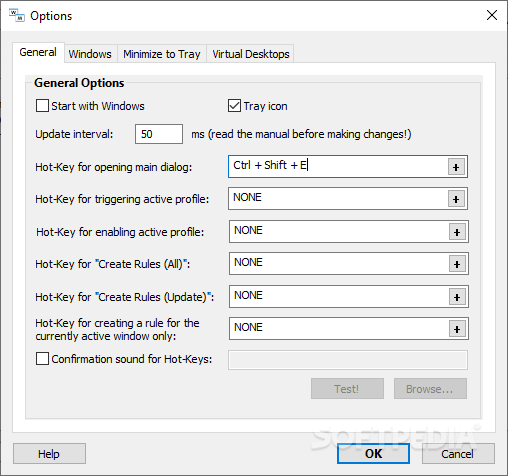
- WINDOWMANAGER PARTIAL FOCUS DRIVERS
- WINDOWMANAGER PARTIAL FOCUS MANUAL
- WINDOWMANAGER PARTIAL FOCUS FULL
I love i3 and it was my first experience with tiling WM years ago. I boot straight into the console and then have a setup where I either run startx or start_sway.
WINDOWMANAGER PARTIAL FOCUS MANUAL
It makes sense that it's not popular, most people have better things to do than read a manual and learn a new configuration language with 100s of options just to move windows around.
WINDOWMANAGER PARTIAL FOCUS DRIVERS
Enabling some Intel drivers fixed the screen tearing but broke my multimonitor setup.Īlso dmenu is garbage compared to program search in modern desktop environments, it's just search for bash commands, half the results arent something you'd want to run from your desktop and it doesn't learn. Starting compton (which seems essential for i3 but the documentation doesn't mention it) didn't help.
WINDOWMANAGER PARTIAL FOCUS FULL
Since most of the time I just have a terminal, Chrome or Emacs in full screen it doesn't even matter. Now I just use the built-in Ubuntu desktop environment (tried the Wayland version but Spotify and Discord don't work). I used i3 for a 4+ years, then a few months ago I got tired of the screen tearing when I scrolled in Chrome and the screen showing a frame or two of checkerboard patterns (actually it's more complicated, like black pixel fuzz around text that used to be there) any time I resized or moved a window. If the text editor has no side bars (such as a directory tree), then it makes sense to have a full-height text editor on the left and maybe to half-height terminals on the right.īut then I think that maybe some IDEs allow to pop out the console/log piece into a separate window, and perhaps that could work nicely with a tiling arrangement. If I were to make the IDE window smaller, the console/log portion of it would be too tiny to see anything. Even though only the beginning of each line is visible, that's enough to tell me when it is time to switch back to the IDE. Then I can follow the console/log of the IDE. My browser partially covers the IDE by occupying the right 75% of the screen. I used to love tiling, but now I use lots of applications that are heavy-weight and graphical, and it seems more fitting to arrange the windows in such a way that strategic corners "peek out" behind the front-most application.įor example, I run my IDE in full screen and the console/log is in the bottom part of the window.

The configuration syntax is essentially compatible with i3 as well.

See my user config for more, let me know of any questions regarding program compatibility under Wayland. I switched to Sway recently, the main reason being is that when you have an external display with a different DPI than your laptop display (which in my case is a HiDPI Retina Display), it's quite hacky to get it work under X, but it works flawlessly in Wayland. When a display is disconnected, macOS merges the windows into the laptop display, but on tiling window managers they just stay in the same workspace number, which can be switched to on the laptop display, this is much more predictable and simpler. I had a couple of failed attempts on Debian/Ubuntu but NixOS made it so easy to switch to i3 and use XFCE as the desktop environment, which is great when you want to use i3 but not worry about setting sleep settings/keybindings for volume and display, etc., so I recommend i3+xfce for anyone wanting to give i3 a try without investing too much time configuring.Īlso, i3/Sway handles external displays well, better than macOS IMO. I've used i3 for several years, and it's one of my favorite window managers out there.


 0 kommentar(er)
0 kommentar(er)
